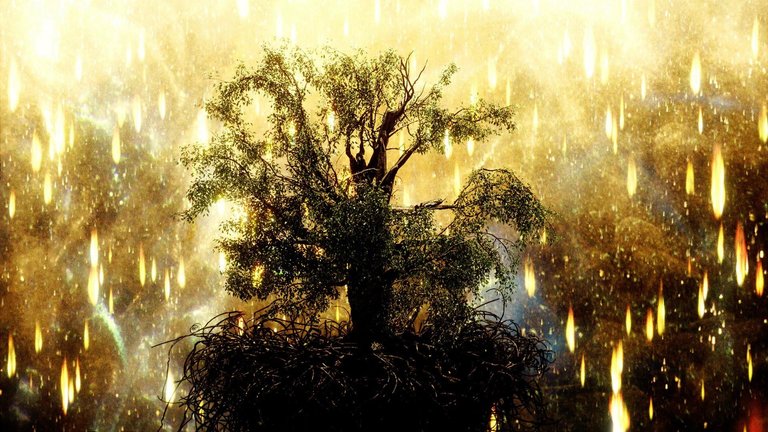Film Review: The Fountain (2006)

The experience of the past few decades has taught us that any film can cultivate a cult following, often more likely when it has initially been a box office and critical disappointment. A prime example of this phenomenon is The Fountain, a 2006 science fiction romantic epic written and directed by Darren Aronofsky. Frequently described by its ardent fans as a misunderstood and tragically underrated masterpiece, the film has sparked fervent discussions about its themes, narrative structure, and visual artistry.
The plot of The Fountain is complex, unfolding across three different time periods. In the first timeline set in 1500s Central America, Spanish conquistador Tomás Creo, pšlayed by Hugh Jackman, embarks on a quest to find the Tree of Life, which promises immortality, under the orders of Queen Isabella, played by Rachel Weisz. The second narrative takes place in the present day, where surgeon Tommy Creo (also Jackman) desperately seeks a cure for his beloved wife, Izzi (Weisz), science fiction writer who is suffering from a terminal brain tumour. Finally, in the year 2500, Tom (again Jackman) is depicted as a monk-like astronaut travelling in a sphere-shaped spaceship towards the Xibalba nebula, carrying the Tree of Life in a quest for transcendence.
Aronofsky can be accused of many things, but a lack of ambition is certainly not one of them. Following the critical acclaim of Pi and Requiem for a Dream, he described The Fountain as an audacious attempt to redefine the science fiction genre. His intention was to shift the focus from a mere obsession with technology to a deeper exploration of philosophical issues, particularly those surrounding life, death, and the acceptance of mortality. This ambitious vision is commendable, yet it also raises expectations that the film struggles to meet.
The film is deeply personal for Aronofsky, who drew inspiration from his own experiences with mortality, particularly during the illness of his parents and his own reflections as he approached the age of thirty. This personal connection infuses the film with a sense of urgency and sincerity, yet it also places immense pressure on the narrative to resonate on a universal level. While the exploration of such weighty themes is admirable, the execution often feels uneven and convoluted.
Visually, Aronofsky has undoubtedly invested significant energy and talent into The Fountain. The film showcases a striking visual style, with meticulous attention to shot composition. Different shapes—triangles, squares, and spheres—are employed to signify the various time periods, creating a unique aesthetic that enhances the storytelling. Moreover, Aronofsky chose to minimise the use of CGI, opting instead for traditional special effects, which results in some breathtaking imagery, particularly in the film's final segment.
However, much of this visual brilliance seems wasted due to Aronofsky's decision to employ a non-linear narrative structure. The result is a film that can be described as messy; audiences are bombarded with a plot that oscillates chaotically between time periods, leading to confusion rather than clarity. Many scenes come across as pretentious rather than powerful, leaving viewers feeling bewildered. The final segment, in particular, evokes a semi-parodic interpretation of Kubrick’s 2001: A Space Odyssey, which may alienate those seeking a coherent conclusion. Despite the film's relatively short runtime of 96 minutes, the convoluted narrative can leave viewers baffled and disappointed.
On the acting front, the performances in The Fountain are solid. Hugh Jackman delivers a commendable performance in his demanding triple role, with his portrayal of the present-day character resonating more strongly than those in the past and future timelines. Rachel Weisz, who was in a romantic relationship with Aronofsky at the time, also provides a strong performance, effectively anchoring the film with her presence and emotional depth. Together, they create a compelling dynamic that underscores the film's central themes of love and loss.
While some of the film's issues undoubtedly stem from its frustratingly long gestation period—marked by challenges such as Brad Pitt's departure from the project and Warner Bros. cancelling production before eventually greenlighting it years later—Aronofsky nevertheless falls short of the high aspirations he set for himself. Although the film's confusing plot allows for various creative interpretations, contributing to its cult status, it ultimately remains a disappointment for many viewers. As such, The Fountain can be recommended primarily to hardcore fans of Aronofsky's work or those with ample time to engage with its complexities.
RATING: 4/10 (+)
Blog in Croatian https://draxblog.com
Blog in English https://draxreview.wordpress.com/
InLeo blog https://inleo.io/@drax.leo
Hiveonboard: https://hiveonboard.com?ref=drax
Rising Star game: https://www.risingstargame.com?referrer=drax
1Inch: https://1inch.exchange/#/r/0x83823d8CCB74F828148258BB4457642124b1328e
BTC donations: 1EWxiMiP6iiG9rger3NuUSd6HByaxQWafG
ETH donations: 0xB305F144323b99e6f8b1d66f5D7DE78B498C32A7
BCH donations: qpvxw0jax79lhmvlgcldkzpqanf03r9cjv8y6gtmk9
Posted Using InLeo Alpha